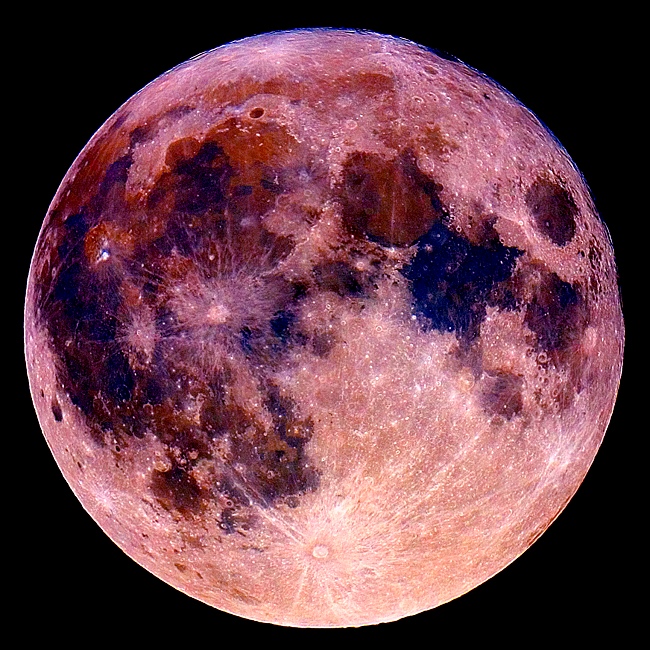
Our closest celestial neighbour has kept us company for at least four billion years and has entertained our imagination
in a variety of ways. It certainly has been involved in our maturation as a species with man's first step on a body
beyond our planet during the latter part of the twentienth century and will, inevitably, be our first stop prior to
any sort of manned travel to a further celestial body such as Mars. The moon has been a great source of education about
our own planet's evolutionary history; it has entertained many inquisitive minds from earlier cultures and generations
about the universe in general and man's role in particular; it has enriched the minds of young children taking their
first look through a telescope and continues to impact our lives in ways we may or may not readily recognize including
tidal forces and various natural rhythms and cycles.
Note: The moon is invariably characterized as a colorless object whose features fall into one
of the countless shades of black and white. Nevertheless, there are reports from Apollo mission astronauts as well as
ground-based observers of color being noted, thus reinforcing the rich and geologically diverse nature of the lunar
surface.
Although the modus operandi for astrophotographers is to also pursue the imaging of the moon in grayscale, thus implicitly
reinforcing the notion that the moon is a monochrome celestial object, the image below indicates the injustice and loss of
science that may occur when discarding RGB information for grayscale. To be more specific, careful inspection of lunar
images indicate subtle colouration which can be enhanced using digital processing techniques to reveal characteristics
surrounding the geological composition of the lunar surface. Using the image below, areas which are blue are associated
with high titatium content whereas the converse is true for areas which are orange and rich in aluminum and iron. Titanium
is of significance since it has a tendency to bind with available oxygen, thus allowing for the possibility that future
habitation of the moon would involve mining and processing this available supply of oxygen for survival.
Note: The Galileo spacecraft has taken various false colour images of the lunar surface and
which resemble the image below. For one such impressive example, click
here. Additional examples
are available here.
|
Body: Moon Mass: 0.0123 x Earth Mean Eq Diameter: 0.2719 x Earth Distance: 406,275 km Sidereal Rev: 27d 07h 43m 11s Age: 14d 23h 21m Phase: 99.9° Diameter: 29.73' Magnitude: -12.6 Rukl: N/A |
 |
Date: Apr 03, 2007 01:53:00 UT+3 Location: Athens, Greece Equipment: AP 160 f/7.5 StarFire EDF AP 1200GTO GEM Canon EOS 300d Exposure(s): 1/200 sec ISO 100 RAW Image Format 3072x2048 Image Size Manual Mode Software: Canon FileViewer V1.3.2 Photoshop CS-II Processing: RAW to TIFF (16-bit) Conv Hue/Saturation Desaturation Levels Contrast/Brightness Unsharp Masking Resampling JPG Compression |